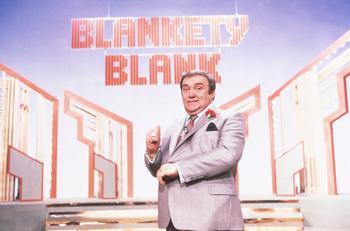

- Blankety blank chequebook movie#
- Blankety blank chequebook full#
- Blankety blank chequebook software#
- Blankety blank chequebook tv#
Those of you that have followed my blogs for the last 20 years know that I’ve never been a fan of monitoring items such as percentage use of CPU and memory usage, and this has become even less worthwhile when you introduce microservices into your applications. Saturation also covers predictive monitoring so you should be using tools that will show you potential saturation issues before they happen not after they have occurred, and it is too late. The level to monitor saturation at will depend on when you start to see degradation in performance which will probably happen before you hit 100% on the metric you are measuring.

If it’s memory-constrained then show memory, if it is an I/O-constrained system then show I/O and for Java™ applications measure heap, memory, thread pool garbage collection. This measurement depends on how your system is constrained.
Blankety blank chequebook full#
This is how full your service is (or will be). The successful implementation of the golden signals is key to achieving observability.
Blankety blank chequebook software#
These have been adopted by many software providers and subject matter experts and have now become universally accepted as the starting point for many monitoring solutions. In this document, they defined the four metrics that you should monitor before you look at anything else and they called these the Four Golden Signals. Google defined the Four Golden Signals in chapter 6 of their Site Reliability Engineering (SRE) Guide. Or to put it more simply – we have the Four Golden Signals. If we take the Saturation signal from the USE method and combine it with the RED method, we have Latency (duration), Errors, Traffic (Rate) and Saturation. Why do we need anything else? It turns out we don’t. We have a methodology that works with microservices.

You don’t win, you are left with the ignominy of collecting the loser’s prize of a Blankety Blank chequebook and Pen, and for the next 23 years you are left contemplating, “What is a Golden Signal”? The celebrity (who it turns out was a time-travelling IT worker from 2021) gasps and slowly turns their card around to reveal “Golden Signals”.
Blankety blank chequebook movie#
You ponder for a while before settling on “GoldenEye”, a recent movie that was a hit just a few years back. The host, Lily Savage reads out the phrase, “Golden Blank” and all you now have to do is match your blank word for that chosen by the celebrity. All that lays between you and shiny clean dishes is to match your answer to that of your chosen celebrity. Imagine that you have made your way through to the Supermatch in which you have a chance to win the star prize of a dishwasher.
Blankety blank chequebook tv#
This week I want you to cast your mind back to 1997 and the TV show Blankety Blank. If you read my last blog on Observability or watched the associated webinar then you will know that I’m a fan of old TV game shows.


 0 kommentar(er)
0 kommentar(er)
